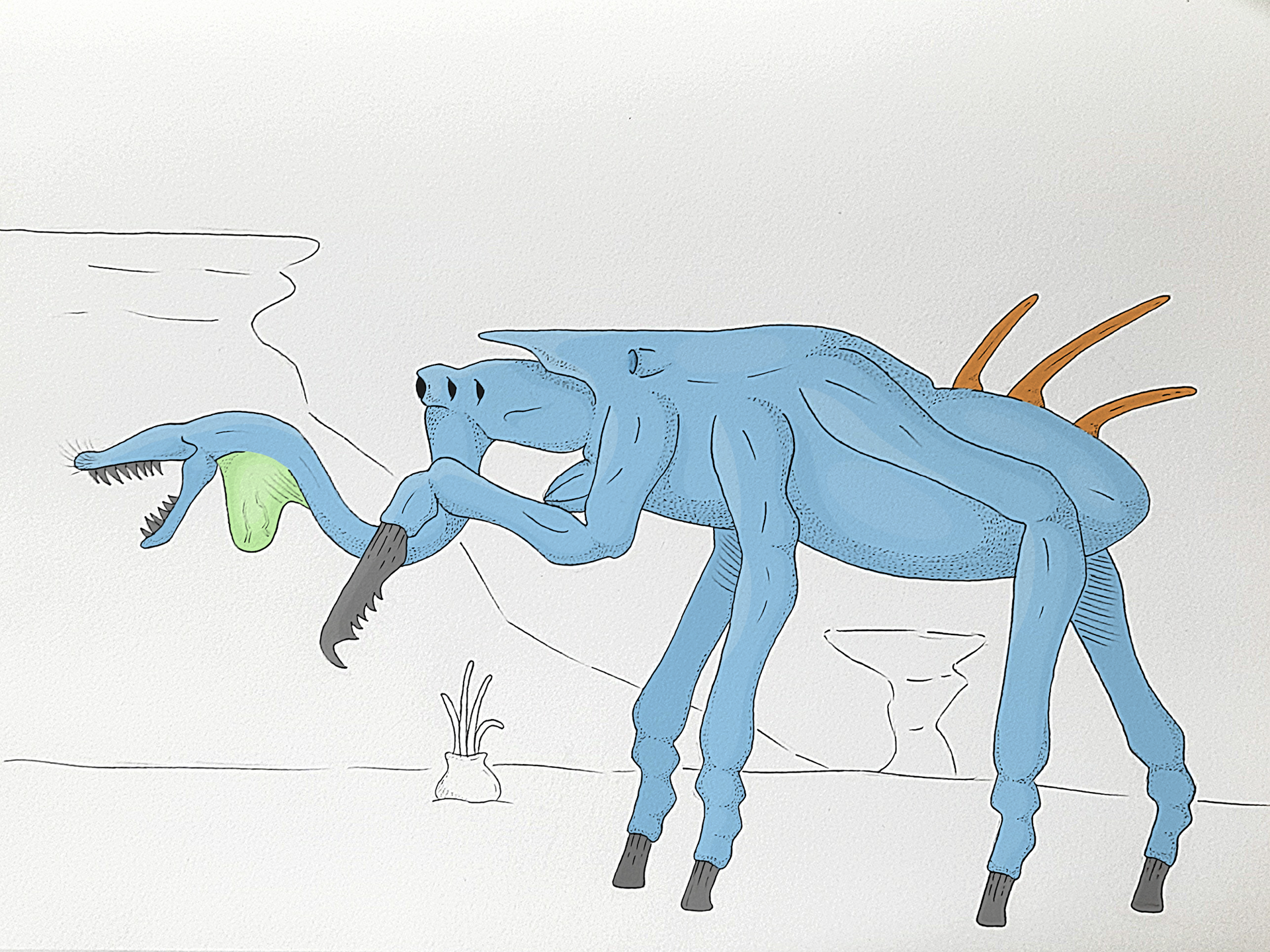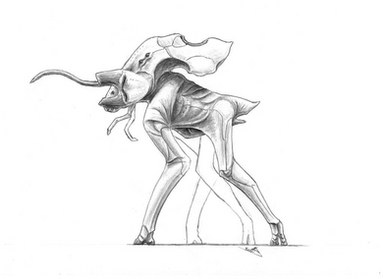HOME | DD
 Sorroxus — Priononychus Tachypodes
Sorroxus — Priononychus Tachypodes

#alien #aliencreature #aliendesign #biology #creature #speculative #specbio #specevo #stithopod #traditionalart
Published: 2021-09-06 12:31:42 +0000 UTC; Views: 6101; Favourites: 39; Downloads: 2
Redirect to original
Description
scientific name: priononychus tachypodes
common name: spine-back
average weight: ~700 lbs
average height: ~5 feet
The Priononychus Tachypodes (fast-footed saw-claw) is a species of the genus Carnifexonychus, a genus closely related to the Theronychus genus, which is the same genus as the Theronychus Tyrannos. The P. Tachypodes is a smaller form of Theronychamorph, which is a subgroup comprising both genera, as well as the genus Ambylonychus, being a couple feet shorter and a few hundred pounds lighter. Because of this, it’s more agile than its larger steppe-dwelling relative, but it lacks the size necessary to take down some of the larger prey in the savanna it lives with, such as savanna-adapted pachypodes. Even in pairs, the savanna-adapted pachypodes may still prove to be too much, and so the P. Tachypodes prefers to hunt medium to small-sized prey.
A defining and iconic feature of the P. Tachypodes are its spines protruding from the back of its abdomen. These spines initially served to protect the creatures, which, during their early evolution, were preyed upon by a larger relative of the T. Tyrannos, which is now extinct (the relative). The spines served to harm the predator whenever they bit down, allowing the smaller creature to escape. But after the predator’s extinction, the P. Tachypodes soon took advantage of its absence, and began to attain larger sizes. Now no longer threatened by predation from other hunters, its spines became a display of sexual maturity and good genes.
The P. Tachypodes inhabits the vast savanna in the center of the continent of Concordia, where it feeds on savanna-adapted megafauna, like the Ensitheres or savanna-adapted Xylopodaropods.
While the P. Tachypodes is definitely not the largest or strongest Theronychamorph, they are some of the most violent when it comes to killing their prey, as our observations have revealed. When they have found a meal, they will take off running at the target, their back legs propelling them at high speeds. They have a top speed of sixty miles an hour, making them the fastest creatures in the savanna. When they have caught up to their prey, they will use their saw-like claws to butcher their prey, their claws making short work of the prey's fleshy body. They do this all while the prey is alive, whereas other Theronychamorphs kill their prey before chopping it up.
An inhabitant of the savanna, the P. Tachypodes has undergone specializations to help it best exist under the hot savanna sun. One of these adaptations is their blunted hooves, which help them to comfortably travel the dry savanna during the day. Another adaptation is their dewlap, which is a hanging flap of skin underneath their trunk, near their jaws. This dewlap is full of blood vessels, and serves to release heat from the animal during the hot and beating daylight hours. Yet another one of these adaptations to help them survive in the savanna is found not on the outside, but on the inside. Inside their abdomen, they possess a sac-like organ whose sole purpose is to store water. This organ was present in the very first transitional stithopod forms, and served to store water in so that the water could continuously be released through pores to keep the animal moist. While many stithopods have lost this organ, some still retain it, and this includes the P. Tachypodes. But while it may have originally been to pump a thin, moist layer of water out to keep the skin moist, it now serves to keep water in. When the P. Tachypodes finds a watering hole, it will drink as much water as possible, filling the sac until it can drink no more. From there, the kidneys will allocate the water in the sac as least as possible while still keeping the creature alive. Often, this process can keep the P. Tachypodes alive for around two weeks before they have to find another watering hole.
Reproduction for the Priononychus Tachypodes is seed-based, as always.
Related content
Comments: 8

👍: 1 ⏩: 1

👍: 0 ⏩: 1

👍: 1 ⏩: 1

👍: 0 ⏩: 0

👍: 1 ⏩: 1

























